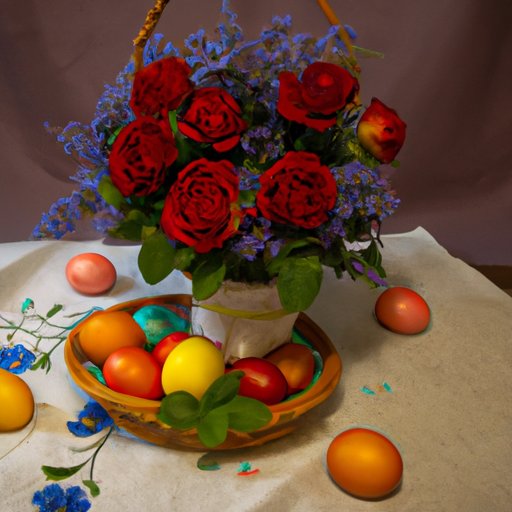Introduction
Easter is a Christian holiday celebrated around the world, yet it never falls on the same date each year. For many, this can be confusing, as most holidays and events have a fixed date or day of the week. However, Easter’s changing date is not random or arbitrary. It is due to a complex system that involves historical, religious, and computational factors. Understanding the reasons behind Easter’s changing dates can help us appreciate the significance of this holiday and how it evolved over time.
Historical Perspective
The origins of Easter date back to the Jewish Passover festival, which commemorates the liberation of the Israelites from slavery in Egypt. In the early Christian church, the date of Easter was set to coincide with the Passover, as Jesus’s death and resurrection happened during this period. However, since the Jewish calendar is based on lunar cycles, the date of Passover varies each year. This posed a problem for the Christian church, as they wanted to have a consistent date for Easter.
The Roman Calendar had a significant influence on Easter’s date. In 325 AD, the Council of Nicaea established that Easter would be celebrated on the first Sunday after the first full moon that follows the vernal equinox. However, the Julian Calendar used by the Romans was not accurate enough, and Easter’s date kept drifting further from the actual astronomical events. This resulted in the creation of the Gregorian Calendar in 1582, which corrected the previous calendar’s errors and established a more consistent date for Easter.
Religious Significance
The date of Easter is determined by several factors that have religious and astronomical significance. First, it must fall on the first Sunday after the first full moon that occurs after the vernal equinox. The vernal equinox marks the beginning of Spring in the Northern Hemisphere, and it occurs when the sun is directly above the equator. Second, the date of the full moon is calculated using the lunar cycle, which lasts for approximately 29.5 days. This means that the date of Easter can fall between March 22 and April 25, depending on the position of the sun, moon, and earth.
Easter has cultural and religious significance for Christians around the world. It is a time to celebrate the resurrection of Jesus Christ, and it represents hope, renewal, and second chances. Easter is also a time for families to come together and participate in various traditions, such as attending church services, decorating Easter eggs, and having Easter feasts.
Computational Approach
The computational methods used to determine the date of Easter are based on complex algorithms that take into account the lunar cycle and the vernal equinox. One such method is the “Easter algorithm,” which is used by many Western Christian churches to calculate Easter’s date. It involves finding the Sunday following the Paschal Full Moon, which is the first full moon that falls on or after the vernal equinox.
The lunar cycle and rules for determining the date of Easter have changed over time. For example, the Julian Calendar used a different method for calculating the date of the vernal equinox, resulting in a different date for Easter than the Gregorian Calendar. Additionally, the Eastern Christian Church uses a different calendar, known as the Julian Calendar, which means that Easter often falls on a different date from that in the Western Church.
Comparative Analysis
Easter is celebrated on different dates by Eastern and Western Christian communities. The Eastern Christian Church, which includes the Orthodox Church, follows the Julian Calendar and uses a different method for calculating Easter’s date. As a result, their Easter celebrations usually fall on a different date than those of the Western Church. For example, in 2022, Western Easter will be celebrated on April 17, while Eastern Easter will be celebrated on May 1.
Geography and culture play a significant role in religious traditions and how they are celebrated. For instance, in some countries, Easter is celebrated for an entire week, while in others, it is only a one-day event. Different cultures have unique Easter traditions that reflect their beliefs and values.
Contemporary Relevance
Easter has evolved over time, and its significance has grown to encompass more than just religious traditions. In modern society, Easter has become a commercialized event, with many stores selling Easter-themed products such as candy, toys, and decorations. While this has led to some changes in the way Easter is celebrated, it has also kept the holiday relevant and accessible to people of all backgrounds.
In recent years, the COVID-19 pandemic has impacted Easter celebrations worldwide. Many churches have had to close their doors to the public, and families have had to celebrate Easter at home. Despite these challenges, people have found creative ways to celebrate Easter and maintain their traditions. For example, virtual church services and video calls with loved ones have allowed people to stay connected.
Conclusion
Easter’s changing dates may seem confusing at first, but they are not arbitrary. They are based on a complex system that involves historical, religious, and computational factors. Understanding the reasons behind Easter’s changing dates can help us appreciate the significance of this holiday and how it evolved over time. Whether you celebrate Easter for religious or cultural reasons, it is a time to come together with family and friends and celebrate the hope and renewal that it represents.
As we continue to navigate the challenges of the modern world, it is essential to remember the importance of traditions, especially those that have been passed down through generations. Easter is more than just a holiday; it is an opportunity to reflect on the past, celebrate the present, and look forward to a brighter future.
